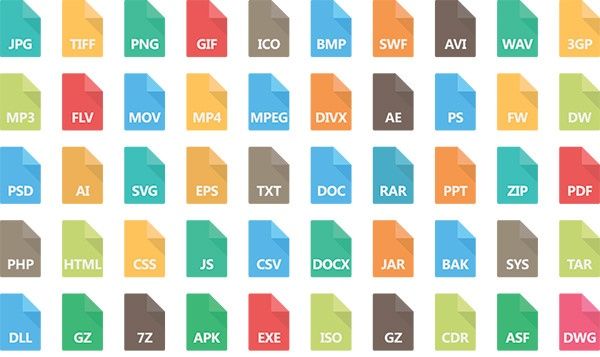Nowadays, data scraping is confidently moving towards the status of a key tool in acquiring data from the World Wide Web. Apps, open source and paid web scrapers make it possible to extract large amounts of data on specific topics in short periods of time. That’s not the top advantage of data scraping, as you can also save all the information you scraped in the format you prefer.
Naturally, you would use different formats for different purposes. The type of format depends on the type of content you scrape and wish to save: plain text, data tables, documents, images, audio files. CSV, Excel and Google Sheets are great for storing scraped data, especially if it’s statistics or research material. From less to more complex and advanced, these three formats are commonly used for saving information in a well-organized and easily accessible way.
CSV (Comma-separated values)
For the easiest format, you can choose CSV. Sure, it’s far from new, but its simplicity can be a valuable asset if you’re looking for a format without any extra functions. CSV (Comma-separated values type file) saves your data as a plain text, where each new row indicates a line, and columns are separated by commas. It’s very useful when you just need to collect information in the most basic way. While CSV doesn’t have certain advantages of Excel or Google Sheets, it‘s highly compatible – you can open a CSV file in any spreadsheet. Also, many websites already allow extracting their data to a CSV file.
Despite those attractive qualities, though, the bare minimum is not always what you need. Just saving the scraped data to a CSV file isn’t enough if you want to further categorize or format it, because CSV doesn’t have a formatting function. Besides, you won’t be able to create more than one sheet. For a more detailed organization and thorough editing of scraped data, you’ll need Microsoft Excel.
Microsoft Excel
Excel is one of the most convenient file formats not only thanks to the capacity to create any number of sheets within one file but also because it allows you to make calculations, which CSV doesn’t. Excel formulas are a versatile tool for putting together statistics or bringing research numbers to a generalized index, as you can perform calculations and reference specific cells. Save the information to an Excel file and then you can put in any font and color to emphasize the parts you need, keep all your charts and tables in one file, with multiple sheets all stored together.
Google Sheets
Everything that Excel offers, Google Spreadsheets enhances by adding the vital ingredient of modern life – the internet. Of course, you can work on a Google Sheet without internet connection too, but the main advantage of this format is exactly the opportunity to work on your spreadsheet online and store it ready at hand, on your drive. You can access your scraped data file on a laptop or tablet, read and edit it with the same solutions as in Excel, and even convert Excel files into a Google Sheet.

By the way, all the changes you make are saved automatically, and you can review them as Google Spreadsheet also saves the history of changes. That function might turn out extremely useful if you accidentally delete a piece of the scraped data or edit it incorrectly. Another strong point is definitely the possibility of sharing the file with other people. Let’s say you scraped all the data you needed, and now it’s time to process it. If you’re doing it with a team, all you have to do is click “Share”, and no need to send sheets back and forth. Google Spreadsheet is also the type of format where you and others can edit the file together.
The exact opposite objective is easy to reach with PDF. That format takes data protection to a serious level by allowing you to protect it from copying and editing with a password. As you might have guessed, there are ways to scrape from PDF files too. What can you keep in PDF that makes it a good choice for storing your scraped data? Well, everything. Text, images, charts, audio files, and all of that will look the same on any device regardless of software or operating system. It’s especially useful for saving images, as no matter how much you magnify the page, the image won’t lose quality. PDF also allows storing charts and tables and searches even lengthy documents quickly. What really attracts attention though is that PDF files are small, so even if you scraped a great deal of data, you won’t have to spend much space on your hard drive.
JPEG
The small file size is an advantage of Jpeg too. That format is one of the most popular, and for a number of good reasons: it stores graphical digital content and displays it unchanged in any program and on any device, and allows users to control the degree of compression of the picture (be that a photo or a scanned picture). Besides, being a widespread format, Jpeg is used by most people so if you scrape images you can be sure most of them are in that format.
Other
It’s worth reminding that you can save audio files in PDF, but if you need to scrape notation too, you should try MSCZ. It’s a format designed specifically for music and supported by Windows, MAC, and Linux. Like PDF and Jpeg, MSCZ files take little space on a hard disk.
Good data management is key to efficiency, and the above-mentioned formats provide you with the ways to store the data you scraped in files that are easy to create and work with. It’s instrumental to choose the right scraping format because its functions and capacities will determine the speed and productivity of your efforts, especially when you deal with large amounts of data.
What are some data saving formats you personally prefer? Make sure to comment below and let us know!



